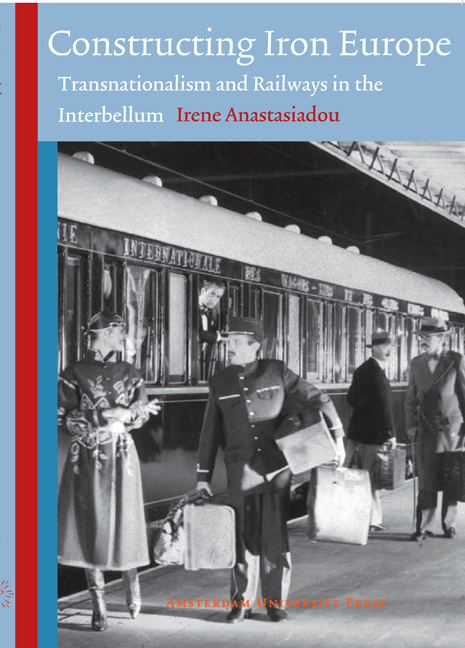Book contents
- Frontmatter
- Acknowledgements
- Contents
- Abbreviations
- 1 Introduction
- 2 Europe in Crisis and Railway Visions
- 3 Shifting Railway Regime
- 4 European Integration, European Fragmentation
- 5 Constructing the National, Constructing the European: Greece
- 6 Uncovering Railway Europe
- Bibliography
- Summary
- Curriculum Vitae
- Appendix I Timeline of Conferences and Conventions held in the Early years After the war, Concerning Railways:
- Appendix II Schedule of International Expresses in the 1930s
- Appendix III List of Illustrations
3 - Shifting Railway Regime
- Frontmatter
- Acknowledgements
- Contents
- Abbreviations
- 1 Introduction
- 2 Europe in Crisis and Railway Visions
- 3 Shifting Railway Regime
- 4 European Integration, European Fragmentation
- 5 Constructing the National, Constructing the European: Greece
- 6 Uncovering Railway Europe
- Bibliography
- Summary
- Curriculum Vitae
- Appendix I Timeline of Conferences and Conventions held in the Early years After the war, Concerning Railways:
- Appendix II Schedule of International Expresses in the 1930s
- Appendix III List of Illustrations
Summary
Germany and European Railways before 1914
Before the outbreak of WWI, Europe was covered by a dense railway network. As I discussed in the introduction, early in the 19th century, railway administrations and national governments took action to facilitate international railway traffic. As a result of this action a few international bodies engaged on issues of international railway traffic were established in the second half of the 19th century. Such bodies worked to establish regulations that would enable trains to run across national frontiers. As existing historiography has shown, Germany had an active and influential role in international railway developments, while France maintained a more conservative and introverted attitude.
The union of Prussian railway administrations (Verein Preu.ischer Eisenbahn Verwaltungen) was formed in 1846. A year later it transformed itself into the union of German railway administrations (Verein Deutscher Eisenbahn Verwaltungen). This was the first private international body established in the geographical area of Europe with the object of creating uniform regulations for the carriage and exchange of traffic. It functioned as a democratic assembly; its decisions were made by majority rule and were imposed on all the members. Its field of activity covered legal, commercial and technical issues. Initially comprising only the Prussian State railways, it later expanded so as to include relations between the Prussian state railways and the neighboring German administrations. Later on it dealt with transport relations between Austria-Hungary, Germany, Luxemburg, the Netherlands and Romania. In 1909 it covered 53 railway networks public and private. From 1850 onward, it also had an assembly of engineers that had the competence to set a number of technical conventions, including common specifications for construction and exploitation of rolling stock. This constituted a common regulation that facilitated the reciprocal exchange of vehicles among its members. Through these shared norms governing the form (gabari) and the technical interface of the material (coupling, brakes etc), the Prussians and the networks affiliated with the Verein developed an early practice of railway interoperability. Augustus Veenendaal in his study of the Dutch railways mentions that through its numerous publications and conferences it exercised a great influence in European railway technique and exploitation and attributed to it an important role in the unification of the European railway network.
- Type
- Chapter
- Information
- Constructing Iron EuropeTransnationalism and Railways in the Interbellum, pp. 97 - 152Publisher: Amsterdam University PressPrint publication year: 2012



